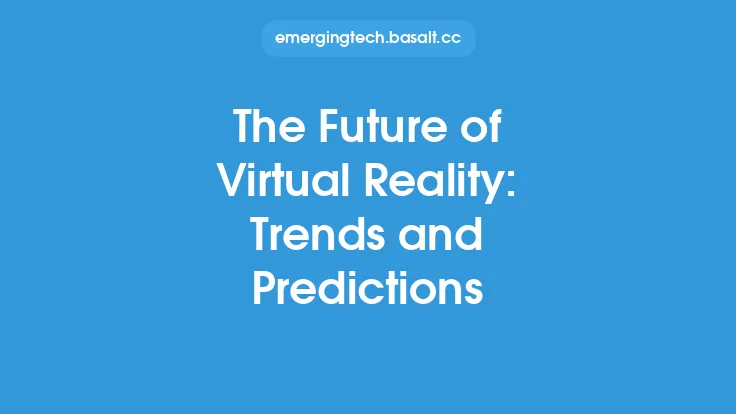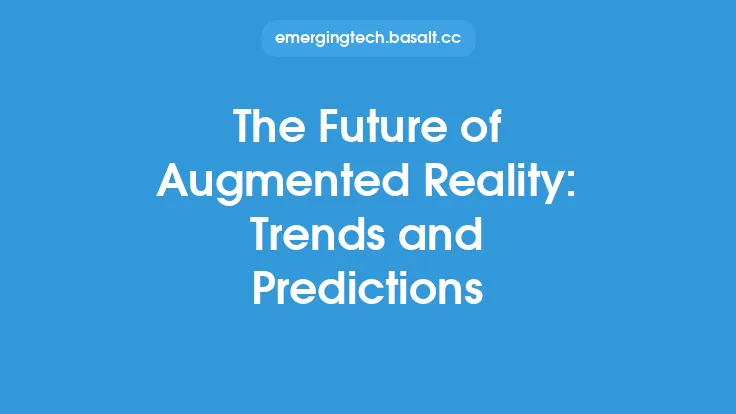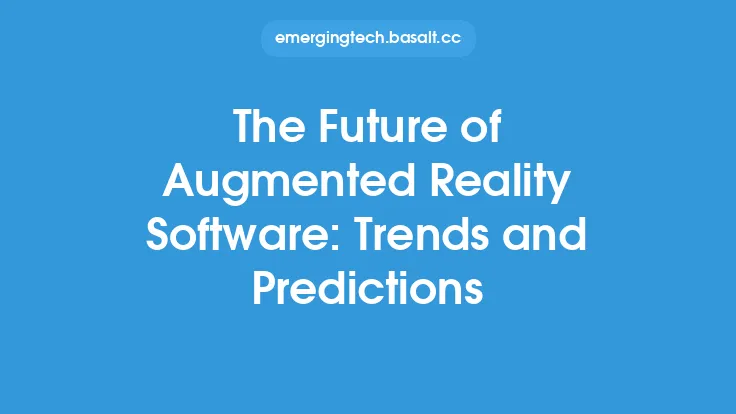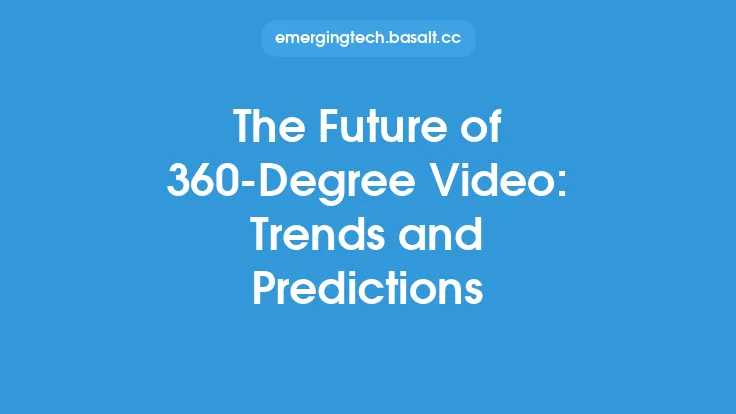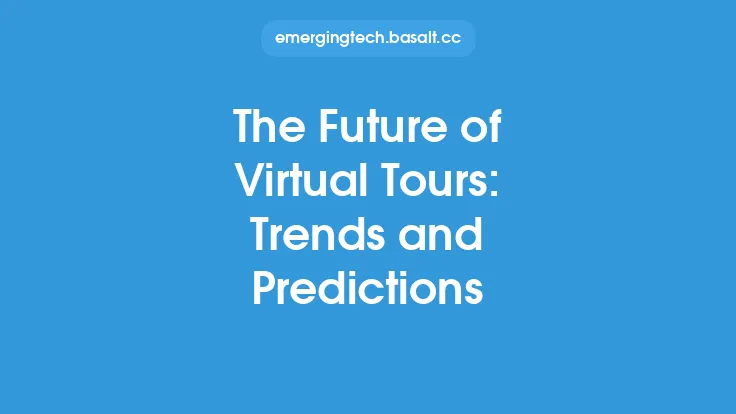The world of entertainment is on the cusp of a revolution, driven by the rapid advancement of immersive technologies. Virtual reality (VR), augmented reality (AR), and mixed reality (MR) are transforming the way we experience and interact with entertainment content. From gaming and cinema to live events and theme parks, immersive technologies are redefining the boundaries of entertainment and pushing the limits of what is possible.
Introduction to Immersive Entertainment
Immersive entertainment refers to the use of technologies that simulate or augment reality to create immersive and interactive experiences. These experiences can range from simple 3D visualizations to complex, interactive simulations that engage multiple senses. The key characteristics of immersive entertainment include presence, interactivity, and immersion. Presence refers to the sense of being physically present in a virtual environment, while interactivity enables users to influence the experience through their actions. Immersion, on the other hand, refers to the degree to which the user is engaged and absorbed in the experience.
Current State of Immersive Entertainment
The current state of immersive entertainment is characterized by the increasing adoption of VR, AR, and MR technologies. VR headsets, such as Oculus Rift and HTC Vive, have become popular among gamers and entertainment enthusiasts. AR technologies, such as Pokémon Go and Snapchat Lenses, have also gained widespread acceptance. MR technologies, which combine elements of VR and AR, are still in the early stages of development but hold great promise for the future. The current state of immersive entertainment is also marked by the emergence of new business models, such as subscription-based services and pay-per-experience models.
Trends in Immersive Entertainment
Several trends are shaping the future of immersive entertainment. One of the key trends is the increasing focus on social interaction and community building. Immersive technologies are enabling new forms of social interaction, such as virtual meetups and multiplayer games. Another trend is the growing importance of content creation and distribution. The demand for high-quality, immersive content is driving the development of new content creation tools and distribution platforms. The rise of cloud gaming and game streaming services is also transforming the way we access and play games.
Predictions for the Future of Immersive Entertainment
Looking ahead, several predictions can be made about the future of immersive entertainment. One prediction is that VR, AR, and MR technologies will become increasingly ubiquitous and affordable. Advances in hardware and software will drive down costs and make immersive technologies more accessible to a wider audience. Another prediction is that immersive entertainment will become more sophisticated and realistic, with the use of advanced technologies such as artificial intelligence, machine learning, and computer vision. The future of immersive entertainment will also be shaped by the emergence of new business models and revenue streams, such as virtual merchandise and sponsored experiences.
Technical Advances in Immersive Entertainment
Several technical advances are driving the development of immersive entertainment. One of the key advances is the development of more sophisticated VR and AR headsets, which offer higher resolution, faster frame rates, and more advanced tracking systems. The use of advanced display technologies, such as OLED and micro-LED, is also improving the visual fidelity of immersive experiences. The development of more advanced controllers and input devices, such as haptic feedback systems and motion tracking systems, is also enhancing the sense of presence and interactivity in immersive experiences.
Impact of Immersive Entertainment on Society
The impact of immersive entertainment on society will be significant. One of the key impacts will be the creation of new job opportunities and industries, such as content creation, experience design, and virtual event production. Immersive entertainment will also have a profound impact on the way we socialize and interact with each other, enabling new forms of remote collaboration and community building. The use of immersive technologies in education and training will also improve learning outcomes and increase access to education. However, there are also potential risks and challenges associated with immersive entertainment, such as addiction, social isolation, and the potential for immersive technologies to be used for malicious purposes.
Conclusion
In conclusion, the future of immersive entertainment is exciting and rapidly evolving. Driven by advances in VR, AR, and MR technologies, immersive entertainment is transforming the way we experience and interact with entertainment content. As immersive technologies become more ubiquitous and affordable, we can expect to see new forms of entertainment, new business models, and new opportunities for social interaction and community building. However, it is also important to consider the potential risks and challenges associated with immersive entertainment and to ensure that these technologies are developed and used in a responsible and ethical manner.
